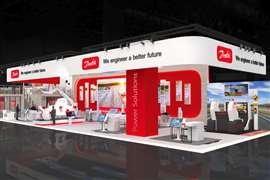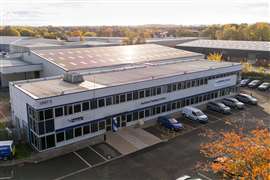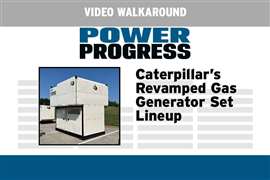Hyundai Genuine: a strategy for Europe and beyond
12 December 2022
On August 19, 2021, Hyundai Heavy Industries Holdings (HHIH) completed its purchase of Doosan Infracore.
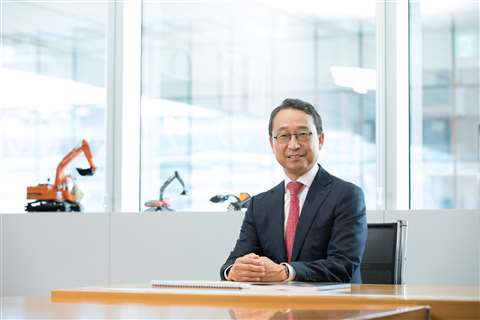 President and CEO of Hyundai Genuine, Young-cheul Cho. Photo: Hyundai Genuine
President and CEO of Hyundai Genuine, Young-cheul Cho. Photo: Hyundai Genuine
At that point, it became Hyundai Doosan Infracore (HDI), a subsidiary of the newly-created Hyundai Genuine, along with Hyundai Construction Equipment (HCE).
Not long after the acquisition, the world was plunged into a pandemic that we are yet to completely recover from.
So how have things changed, in terms of Hyundai Genuine’s plans for these two companies?
Mike Hayes of Construction Europe asked this and more of the company’s president and CEO, Young-Cheul Cho.
-----------------
I’m interested to know about your plans for Hyundai Construction Equipment and Hyundai Doosan Infracore. Will the two companies operate completely independently, or will they, for example, make use of the same components?
Hyundai Construction Equipment (HCE) and Hyundai Doosan Infracore (HDI) will continue operating independently as separate entities. However, in order to maximize the synergy between the two companies, Hyundai Genuine, an intermediate holding company, will function as a control tower to further strengthen cooperation in purchasing and R&D.
The key here is the development of an integrated platform. The three construction equipment companies of Hyundai Heavy Industries Group – Hyundai Genuine, HCE, and HDI – plan to complete the development of an integrated platform by 2025 and launch an integrated model.
Through this, HCE and HDI will be able to share core components as well as many other equipment parts. This will enable economies of scale and thereby enhance product competitiveness. However, even in this case, the two companies, HCE and HDI, plan to maintain their own identity and competitiveness by differentiating designs, functions, and weight of the equipment.
-----------------
Will these two companies continue to compete head-to-head, or will we see the type or size class of the equipment they produce change over time?
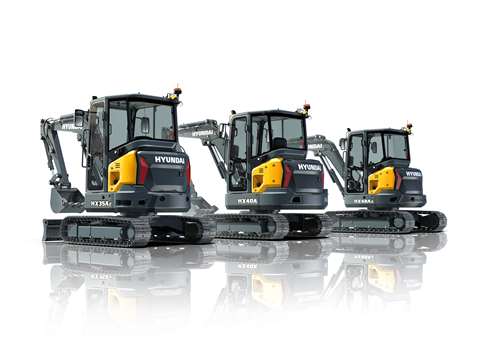 Hyundai featured some of its newest machines at Bauma in Germany. Photo: Hyundai
Hyundai featured some of its newest machines at Bauma in Germany. Photo: Hyundai
HCE and HDI have strengths in different models and markets. In fact, HCE has shown strong sales performance in mid to large and extra-large excavators, mainly in emerging markets such as Asia, Central and South America, and Africa.
HDI, on the other hand, has a relatively superior position in compact equipment and mid to large-sized equipment, mainly in developed markets such as North America and Europe, and also in China.
Due to the nature of construction equipment, many customers prefer to purchase products of the same brand, so it is important for manufacturers to build a diverse product line.
The two companies, therefore, plan to maximize their sales power by cross-selling 125-ton excavators, backhoe loaders, 80-ton and 100-ton excavators and articulated dump trucks through their distribution networks.
-----------------
This is a very challenging time for the European construction market, with high inflation and supply chain challenges. Is the current situation having an impact on Hyundai’s approach to the development of equipment?
We are seeing such challenges not only in the European construction market, but globally and throughout all industries.
However, what we can ensure is that the construction businesses of Hyundai Heavy Industries Group (Hyundai Genuine, HCE and HDI) will keep up the hard work despite any difficulties to develop related technologies and enhance the quality of our products.
We will also continue to focus on securing fundamental competitiveness, achieving unmanned automation, and leading the electric construction equipment market.
-----------------
How difficult is it to keep up with demand, given the scarcity of materials and components – and what items or components are you finding it most challenging to procure?
The price of raw materials is continuing to rise globally, and the supply chain and logistics system have become unstable due to Covid-19 and the Russia-Ukraine war.
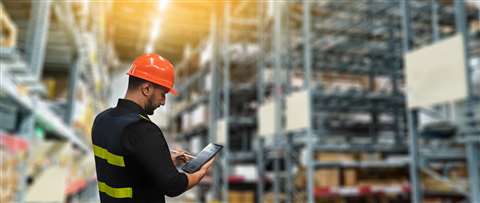 A scarcity of raw materials and components has hampered growth throughout the construction equipment industry. Photo: Adobe Stock
A scarcity of raw materials and components has hampered growth throughout the construction equipment industry. Photo: Adobe Stock
The difficulties and challenges caused by it are witnessed not only in the construction machinery industry but in other industries as well.
Since the sourcing and logistics-related problems cannot be resolved in the short term, the three construction equipment companies are preparing to organize a joint task force (TF) team to diversify supply lines and strengthen parts procurement capabilities.
In terms of production, the companies plan to respond promptly by utilising the global production bases of each company, so that construction equipment can be delivered in a timely manner.
-----------------
Continuing urbanisation is obviously an important element of modern construction. With this in mind, do you expect compact machinery to become more important moving forward?
As the construction equipment market matures, there is a tendency to shift from mid to large-sized equipment to compact options such as small and mini equipment.
This is shown by the high proportion of compact equipment sales in developed markets such as North America and Europe, mainly because more demand for small-scale maintenance or construction projects are projected than large-scale development projects in these markets.
In fact, in developed markets, the lead time of major compact equipment companies is becoming prolonged, driving a market where the supplier has the advantage.
Accordingly, HCE and HDI plan to expand the compact business by launching new MEX (mini excavator) products by early 2024.
The two companies also plan to establish an organization dedicated to compact equipment and to increase support for dealers with demo/rental equipment promotions, as well as increase sales networks.
Through such efforts, the two companies are drawing a blueprint to rank among the top 5 MEX companies by 2025.
-----------------
Another aspect of urban construction is emissions. Can you tell me about your plans for the development of low- or zero-emissions equipment?
HCE and HDI are implementing a step-by-step action plan with the goal of achieving carbon neutrality in all of their business sites by 2050.
At the same time, the companies are also promoting the transition to an eco-friendly business in order to reduce carbon emissions from product use.
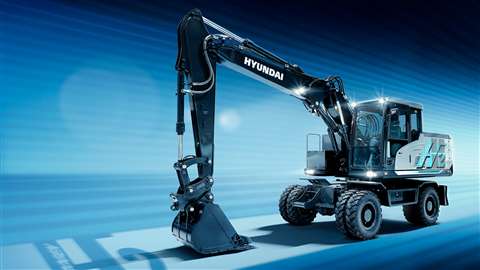 Hyundai Construction Equipment took its new Hydrogen wheeled excavator to the recent Bauma fair. Photo: Hyundai
Hyundai Construction Equipment took its new Hydrogen wheeled excavator to the recent Bauma fair. Photo: Hyundai
HCE is enhancing production efficiency by improving the manufacturing process in both domestic production plants as well as all global business sites including China, India, and Brazil, and is promoting the transition to renewable energy.
By reorganising the portfolio to focus on products incorporating energy-saving technologies, HCE plans to increase the sales proportion of eco-friendly products up to 97% by 2040. To this end, after introducing second-generation equipment based on an electric-only platform in 2023, the company plans to establish a lineup of mini and small electric excavators by 2026.
The 14-ton hydrogen wheeled excavator developed for the first time in Korea, will go into mass production from 2026.
HDI is also planning to introduce a 1.7-ton mini electric excavator to the domestic market in February 2023 and is pushing to develop an 11-litre displacement hydrogen fuelled engine with an output of 300KW, plus a hydrogen tank system, to realize “zero carbon.”
In the case of hydrogen fuelled engines, they are expected to be installed in commercial vehicles such as trucks, large buses, and construction machinery such as excavators, by 2024, and after the verification process, full-scale mass production of the products is expected to begin in 2025.
-----------------
For compact equipment, do you see electric power being the primary choice for the future, as opposed to hydrogen?
Regarding small equipment, we expect electric battery-based equipment to be more popular than hydrogen-based ones.
The biggest advantage of hydrogen fuel cells is that their volumetric energy is relatively high – but since a tank, fuel cell, cooler, etc. must all go inside the equipment, this would be more applicable in medium to large products. Thus, it is more advantageous to install electric batteries in small equipment.
In addition, since small equipment is mainly used in urban areas or farms, it is easier to access electrical infrastructure than medium-large equipment that works in places without electricity infrastructure.
Also, because the work intensity is usually relatively lower, the equipment can be operated for the whole day with a single charge, making electricity the more appropriate option.
Besides, a simple and easy-to-charge BEV (battery electric vehicle) would be more suitable than an expensive and complex system because the user base is very diverse, ranging from professional operators, individual operators, and individuals.
-----------------
Are you seeing an increase in customer interest in electric equipment, or do you feel European regulations will have to drive the switch to electric power?
The regulations on construction machinery emissions are being tightened. This trend, which began in developed markets such as North America and Europe, is spreading to countries around the world, including Korea.
Construction equipment manufacturers are expanding research and development of eco-friendly equipment, accordingly, and customers are also gradually taking more interest in hydrogen and electric equipment, which has led to rapid growth in the eco-friendly construction equipment market.
Currently, the market is expanding to medium-sized excavators and mini-wheel loaders, and as was confirmed at the Bauma exhibition this year, leading companies are trying to diversify their line-up of electric battery products, from mini to 20-ton mid to large models.
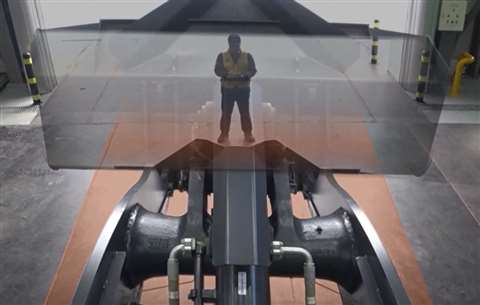 ‘The Transparent bucket’...Operators are able to see through the machine’s bucket via a monitor and using camera technology. Photo: Doosan
‘The Transparent bucket’...Operators are able to see through the machine’s bucket via a monitor and using camera technology. Photo: Doosan
However, when compared to existing diesel equipment, demand at the end user stage is yet to be formed. In order to preoccupy the future eco-friendly equipment market, it is necessary to improve infrastructure or charging methods, which are relatively inconvenient compared to existing internal combustion engine equipment, and also to review
subsidies or tax benefits at the government level.
-----------------
Can you tell me something about your plans for the development of in-house technology?
Our in-house technologies are prioritised on unmanned automation and electrification. HDI has successfully demonstrated ‘Concept-X’, its unmanned integrated control solution for construction sites in 2019 and has continued working on related projected ever since.
XiteCloud is an example of such smart construction solution which has been commercialised and received great feedback from many of its users.
Another in-house technology of HDI is the “transparent bucket”, which is the industry’s first and applied on its wheel loaders. The “transparent bucket technology” allows the driver to check blind spots beyond the bucket through a monitor, by installing two cameras on the top and bottom of the wheel loader to film the front, as blind spots in front of the wheel loader have posed a high risk for accidents.
The technology, unique to the company, holds the title of “industry first” both domestically and globally, and is expected to make a significant contribution towards strengthening the safety of field workers as well as increasing work efficiency.
XiteSafety is another unique technology developed by HDI with the purpose of becoming a next generation safety management platform.
This technology has been created to prevent collision or accidents between equipment and operators by using IoT to detect their locations on-site and has been awarded the Innovation Award at CES 2023.
Currently, both companies have developed, and are making use of technologies geared toward digital innovation.
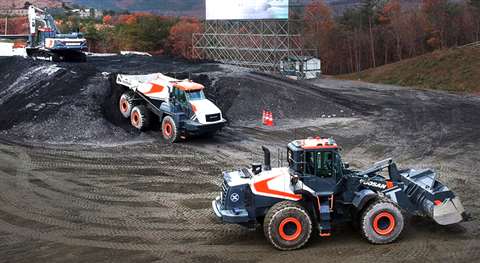 HDI’s construction platform was demonstrated to visitors at the recent Bauma trade fair. Photo: Doosan
HDI’s construction platform was demonstrated to visitors at the recent Bauma trade fair. Photo: Doosan
HCE, through its digital technology brand “Hyundai Connect,” utilises ICT, IoT, and AI technologies to support the work of drivers, and applies solutions that enhance safety and improve equipment uptime on site.
HCE is also developing a technology that can control the construction site terrain survey and analysis, as well as the operation status of equipment fleets.
HDI is taking the lead in futurising construction by converging and applying ICT and AI-related technologies to construction sites through “Concept-X,” an automated unmanned control system for smart construction.
The company has been introducing technologies optimised for future construction sites, such as automation of construction site surveying using drones, unmanned automation of equipment, and remote control based on 5G communication. It is also developing a big data platform called DI360, in collaboration with Palantir Technologies of the US.
POWER SOURCING GUIDE
The trusted reference and buyer’s guide for 83 years
The original “desktop search engine,” guiding nearly 10,000 users in more than 90 countries it is the primary reference for specifications and details on all the components that go into engine systems.
Visit Now
STAY CONNECTED




Receive the information you need when you need it through our world-leading magazines, newsletters and daily briefings.
CONNECT WITH THE TEAM











